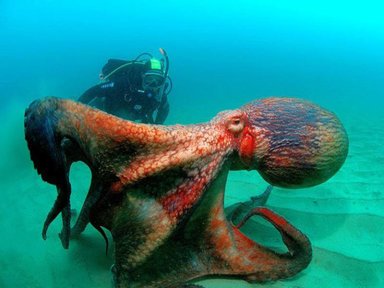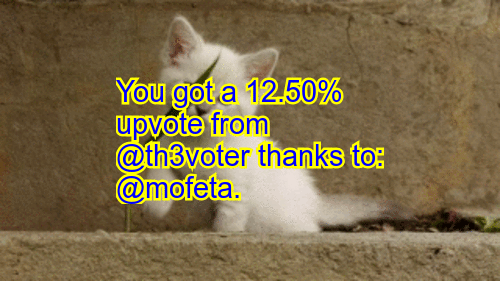
Image: Andrei Shpatak.
Let's see how human blood works for the purposes of oxygen transport. It leaves the lungs freshly oxygenated with a tO2 somewhat lower than 100 mmHg, a voltage corresponding to a concentration of about 195 ml O2 l-1. Under resting conditions, the blood returns from the tissues to the lungs with a tO2 of about 40 mmHg, corresponding to a concentration of about 150 ml O2 l-1. The arteriovenous difference, those 40 ml O2 l-1, is what we call the O2 discharge and reflects the magnitude of the blood oxygen reduction caused by the tissue consumption.
If instead of at rest, the individual performs physical exercise, the arterial blood leaves the heart with a tO2 of between 80 and 90 mmHg, depending on the blood flow, and the concentration is around 190 ml O2 l-1; As you can see, these partial stresses and concentration of O2 are somewhat lower than those of the arterial blood in resting conditions, but the difference is very small. The lowest concentration in this case is due to the fact that to satisfy the metabolic demands derived from the exercise, the blood flows through the pulmonary capillaries more quickly, so that it does not reach a complete equilibrium with the partial pressure of oxygen in the alveoli. The blood (already venous) returns from the tissues with a tO2 of approximately 20 mmHg (concentration of about 70 ml O2 l-1). Therefore, the discharge is about 120 ml O2 l-1, and although it can vary depending on the intensity of physical activity, the variation is not too important unless activity levels are so high that muscle mitochondria cause strong reduction of venous tO2. If the tO2 becomes reduced below 10 mmHg, the contribution of O2 would be insufficient to sustain the aerobic metabolism and it would be necessary to resort to lactic fermentation to obtain ATP. In conditions of not too intense physical activity, it is the cardiac output (volume of blood driven by the heart per unit of time) through, above all, the heart rate (beat frequency), which is modified to cope with different needs.
The magnitudes of the parameters reported in the previous paragraphs for the human species are very similar for most mammals. His hemoglobin is a typical pigment with low affinity and high charge voltage. The affinity of a pigment reflects the propensity of that pigment to combine with oxygen, that is, to capture it. Those of high affinity capture it even at very low partial voltages; the opposite occurs with mammalian hemoglobin and with other pigments, since partial high oxygen voltages are required for the pigment to approach saturation. These hemoglobins are characteristic of animals that live in environments with high oxygen availability and whose respiratory epithelia do not impose scarcely limitations on the diffusion of gases through them. Under these conditions it is convenient that the pigment is of low affinity since it does not have any problem to capture the necessary oxygen and however, it yields to the tissues with extreme ease.
Not only mammals have pigments with these characteristics. Many other vertebrates have high-load hemoglobins; they are species that live in environments with abundant oxygen. And certain species of invertebrates, such as the sabotid polychaetes, also have this type of pigment, although in this case it is chlorocruorines.
Cephalopods also have pigments of relatively low affinity. They are not hemoglobins, like those of vertebrates, nor chlorocruorines, like those of the mentioned polychaetes, but hemocyanins. And they are not found inside specialized cells, but in colloidal suspension. This feature greatly limits the capacity of the blood to house combined oxygen, since for osmotic reasons, the concentration of plasma proteins can not be too high. The fact is that the cephalopods are characterized by having a low pigment concentration and, therefore, the oxygen capacity of their blood is modest: between 20 and 50 ml O2 l-1, values that are in the lower range of the corresponding to the fish, which are the vertebrates with which we can compare them because both occupy the same means and develop similar levels of activity.
Unlike birds and mammals, octopuses and squids practically exhaust oxygen when the tissues pass through the blood, so that the venous reaches the gills almost anoxic. And that happens even when they are at rest; therefore, the needs that can be derived from an increase in metabolic demands can only be covered by raising the cardiac output or resorting to anaerobic metabolism pathways. In the octopus Enteroctopus dofleini arterial blood has a tO2 of about 70 mmHg (can vary between 50 and 90 mmHg) and hemocyanin is 85% saturated (between 65% and 95%). Venous blood, however, has a tO2 of around 8 mmHg (between 0 and 16 mmHg) and hemocyanin has only 7% (between 0 and 18%) of the oxygen that can reach saturation. The discharge of the pigment is very important in relative terms, it is practically empty, but it is worth remembering that it is a blood with a low concentration of pigment and, therefore, low oxygen capacity.
We have seen here several pigments (hemoglobin, chlorocruorine and hemocyanin) of low affinity; and all of them correspond to animals that live in environments with high availability of O2 and that develop an important physical activity. That the pigment is of low affinity does not suppose any inconvenience, since the environmental abundance of oxygen allows a sufficient acquisition and, on the other hand, they are discharged with facility, what allows to satisfy the own oxygen demands of the metabolism of active animals.
References:

You got a 12.50% upvote from @th3voter thanks to: @mofeta!

Image Source cloudinary.com
This post has upvoted from @th3voter !For more information, click here!
You can earn daily profit by delegating SP to our bot, 100% of earnings paid out to delegators. To do so, click below:
30SP, 50SP, 100SP, 250SP, 500SP, 1000SP, 5000SP, 10000SP,
Custom Amount
Make sure you have at least 15 SP left on your account.
You got a 8.70% upvote from @sleeplesswhale courtesy of @mofeta!
You have been defended with a 20.24% upvote!
I was summoned by @mofeta.
Great post!
Thanks for tasting the eden!
You got a 11.11% upvote from @joeparys! Thank you for your support of our services. To continue your support, please follow and delegate Steem power to @joeparys for daily steem and steem dollar payouts!
You got a 3.50% upvote from @minnowvotes courtesy of @mofeta!
Release the Kraken! You got a 4.45% upvote from @seakraken courtesy of @mofeta!
@mofeta you were flagged by a worthless gang of trolls, so, I gave you an upvote to counteract it! Enjoy!!